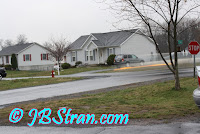Occasionally nicknamed 'ghosting', Light Graffiti will become a fun new skill in your photographer's toolbag.

Any decent digital camera will work just fine for your first attempt at light painting, and the only strongly recommended tool is a tripod, to keep the lens steady during the extended exposure times, especially if you would like to be the 'ghost'.
First, set your exposure timer to no less than 3 seconds. Also known as 'shutter speed', this is the length of time that the shutter remains open after you click the release button. For action shots, this is normally set very fast (a split second).
For most cameras you will need to bypass the auto settings and move to 'manual' and the "TV" setting (for Time Value) to slow the exposure enough for light painting.
Setup your tripod or on a steady base in a mildly lit setting ("dusk" lighting) and collect your light source(s). An LED flashlight works well, but with the right contrast between a dim background and a bright source light, just about any lights will work to varying degrees. Set your focus to about 3ft from the lens, or leave auto-focus on.
*This is also the same basic technique used to get those cool blurry motion pictures of waterfalls and similar intentional 'in motion' blurs.
With the shutter speed set to 3-6 seconds, stand in front of the camera with your flashlight in hand. Turn on the flashlight and reach out to click the shutter release, which will remain open for 3-6 seconds. In that time, you will draw your name in the air with the flashlight pointed toward the camera.
Remember to keep the light moving, and if your painting is to be small and simple, then make your pattern and drop the flashlight down or turn it off until you hear the shutter close to avoid over-exposed spots in your image.
If you stand fairly still during the painting process, you become your own model and part of the image.
You can also move your self around a bit for those few seconds so as to become a ghost in your own image.
When you're ready to experiment with that part of the painting, here's an idea for you to try:
Double exposure ghosting with a light painting.
Now that you have the basics under your belt, experiment a bit with traffic, children, fireworks, or any other light and/or motion source that contrasts a dim background that doesn't move. *Complete darkness makes for a completely different result.
My garage samples above were shot under a dozen fluorescent bulbs, so your bedroom with the lamp on will work just fine. Make sure to keep the room light behind the camera, and if it's still a bit too bright, try a smaller bulb (swap a 100Watt for a 60watt) for the shooting session.
Be aware of the background, and hang a sheet as a backdrop if it will help to keep the viewer's eyes on your art rather than the dirty underwear in the background.
Have fun with it!
copyright, JBStran.com









No comments:
Post a Comment